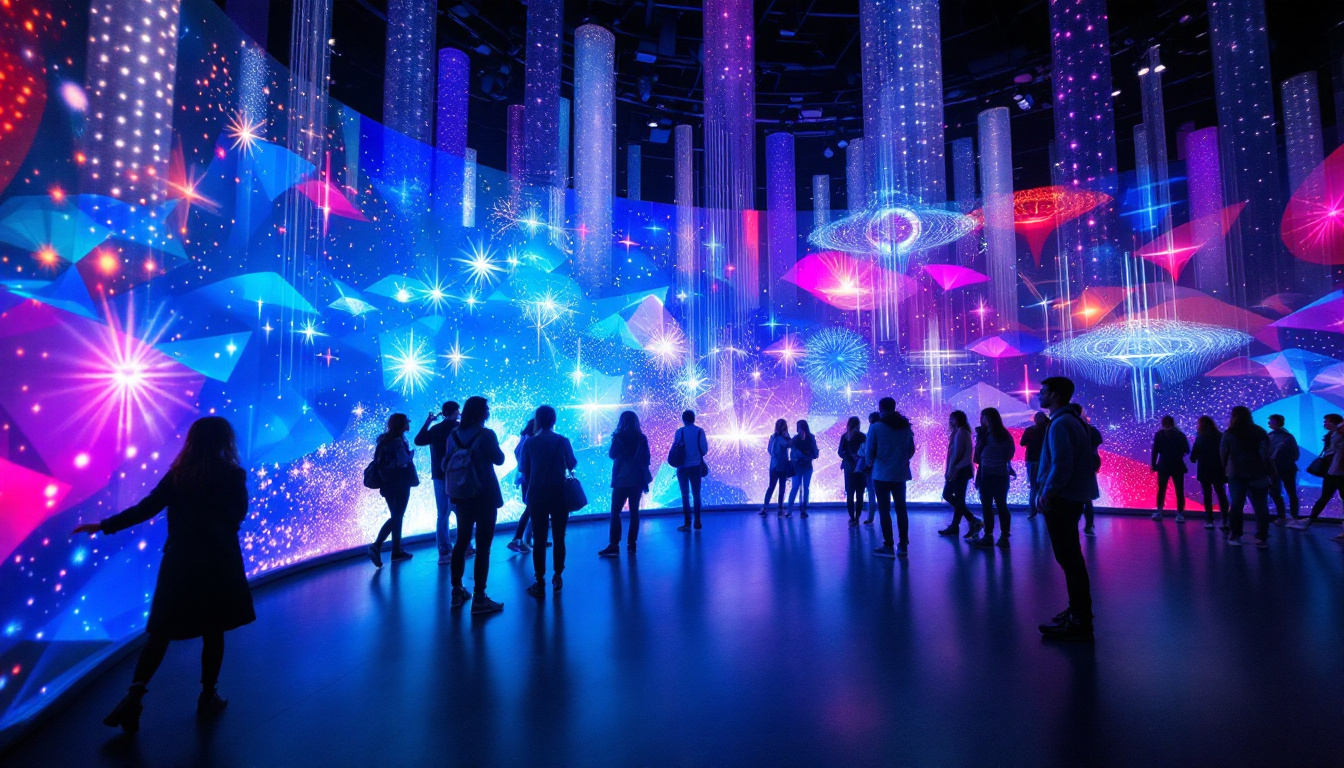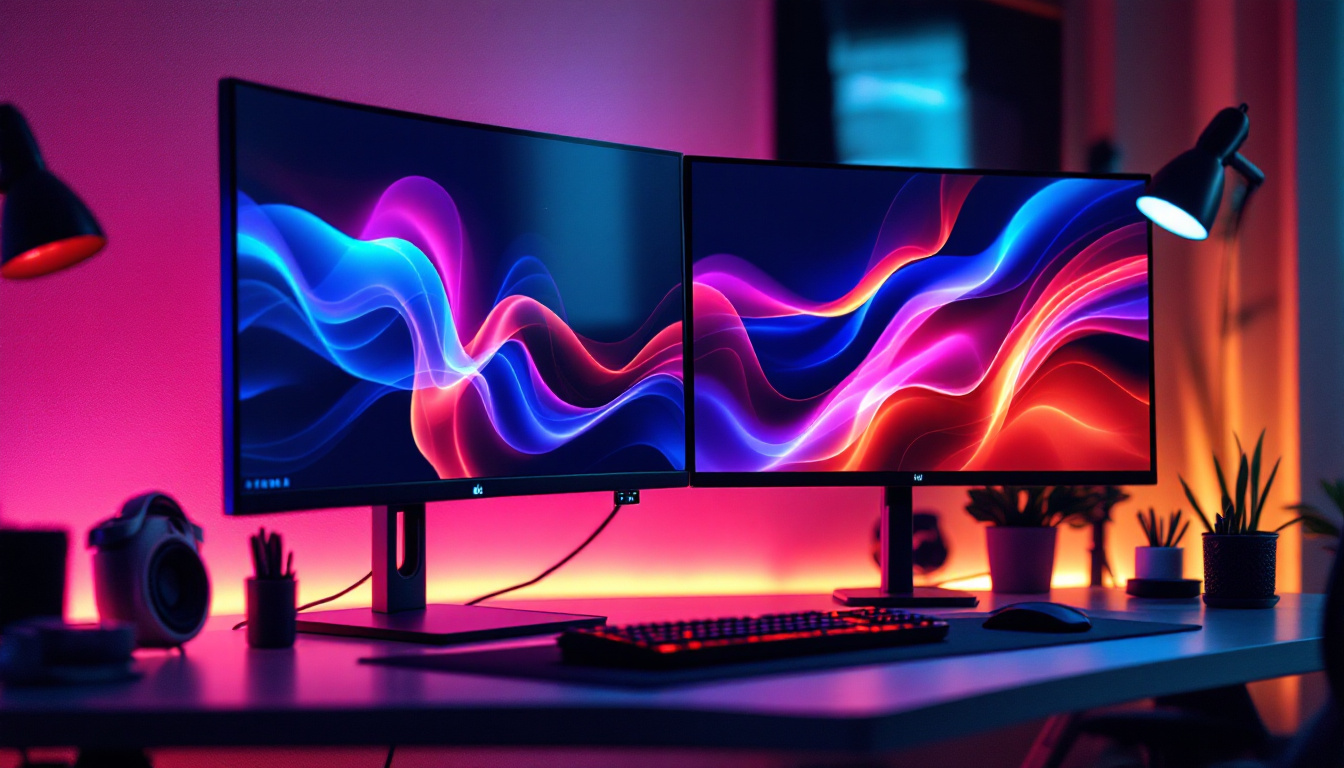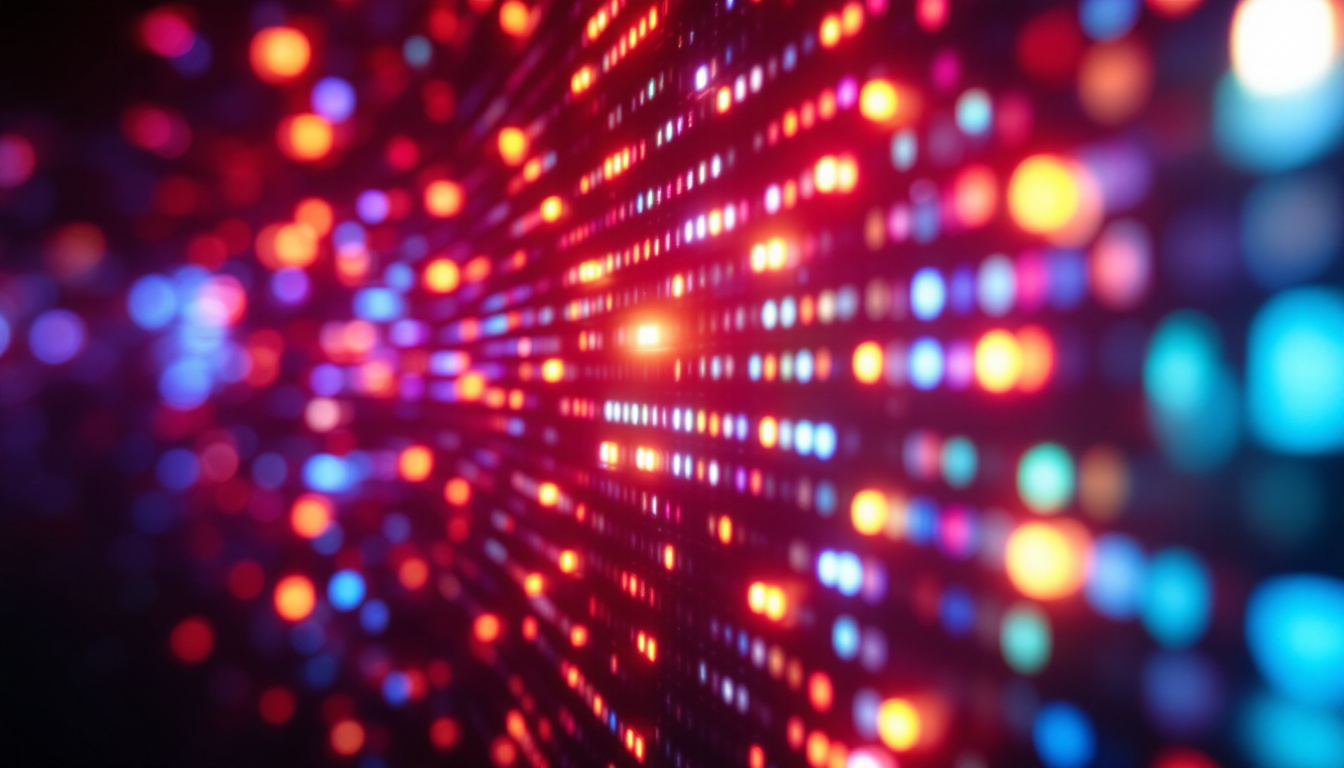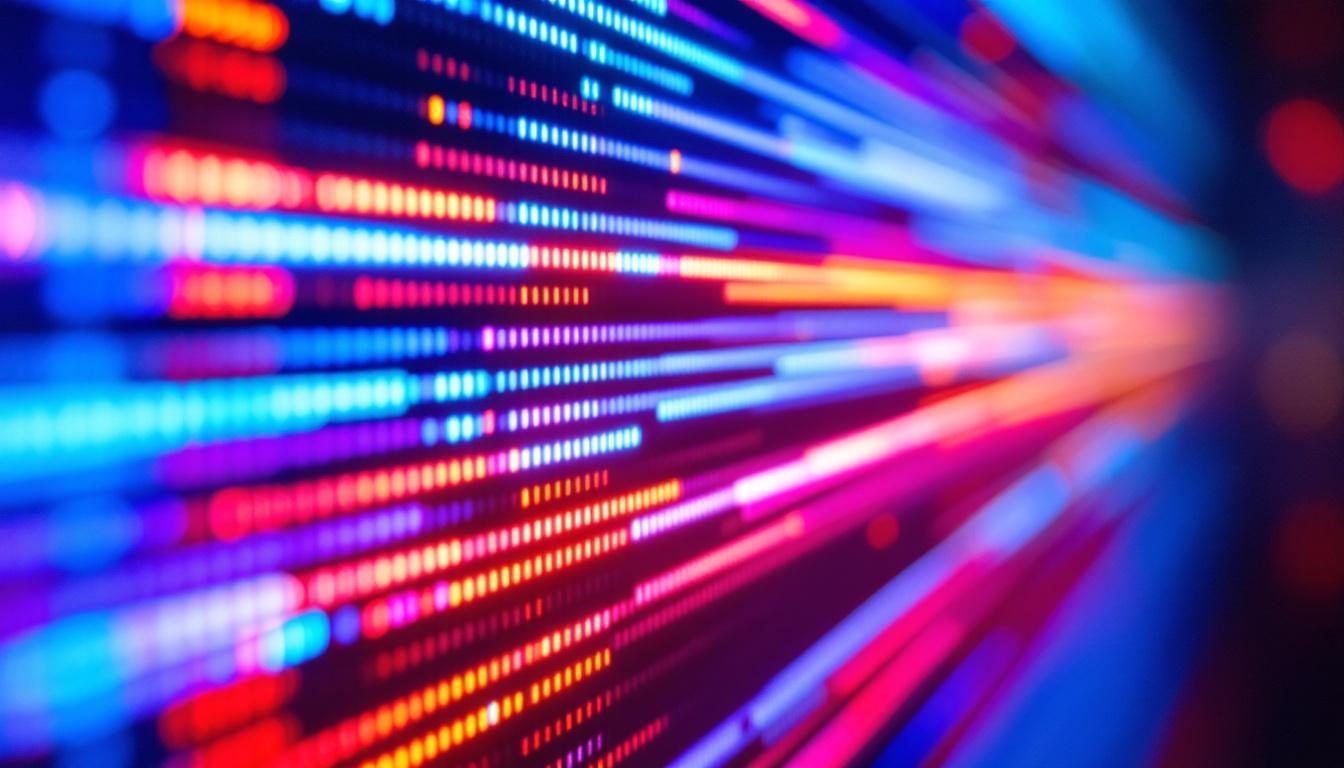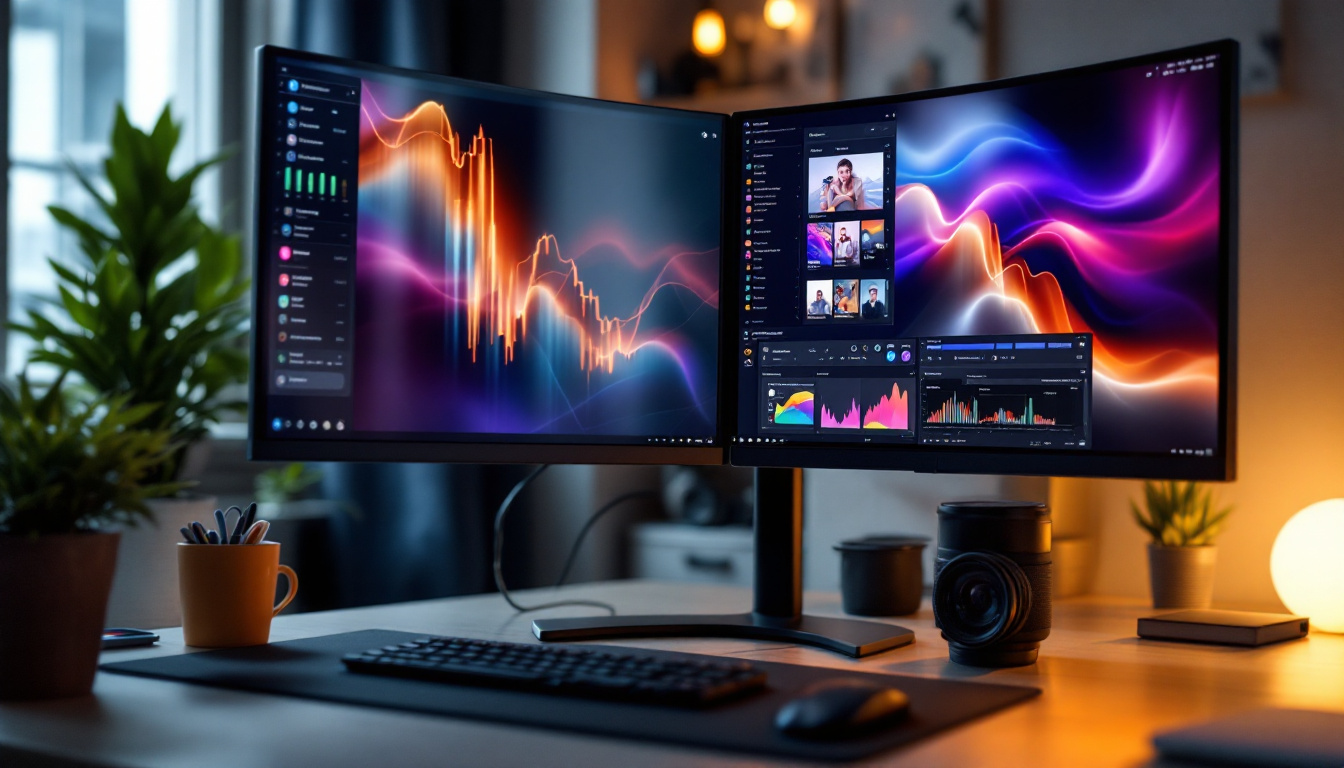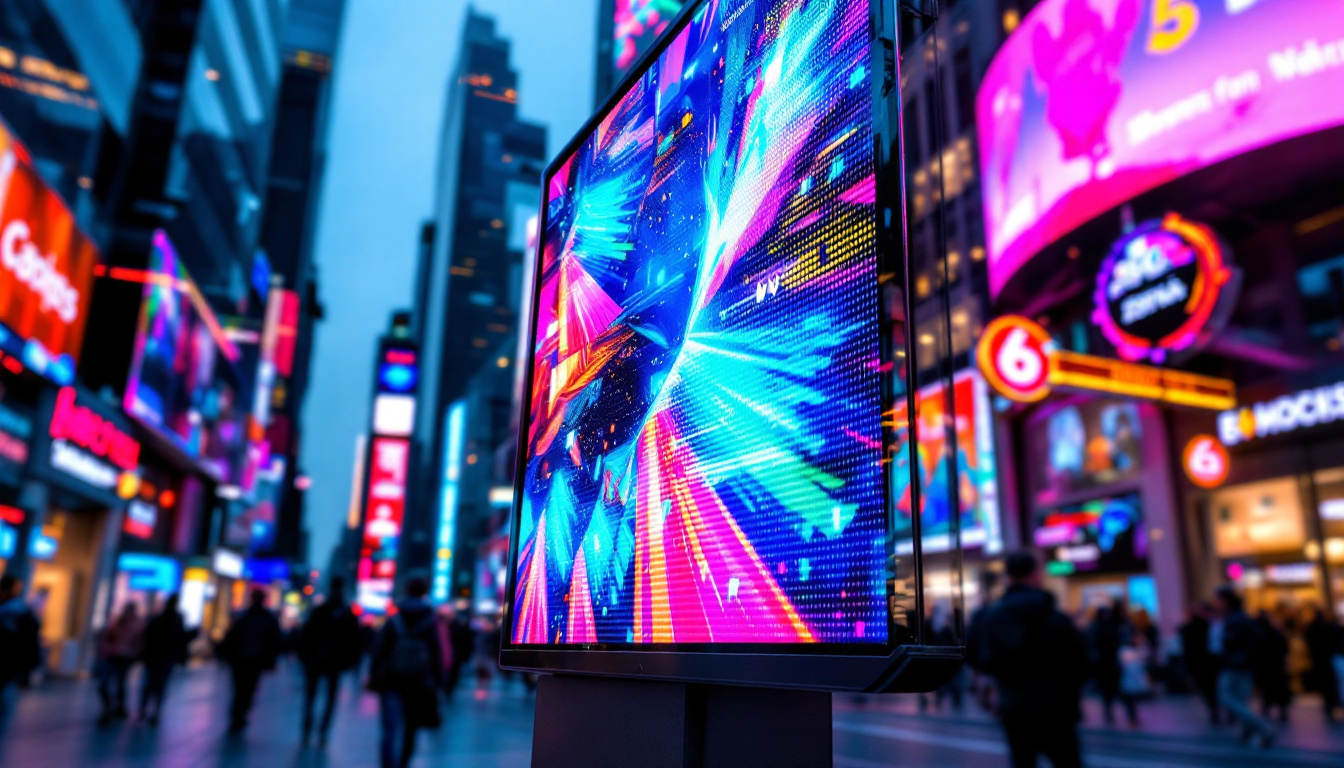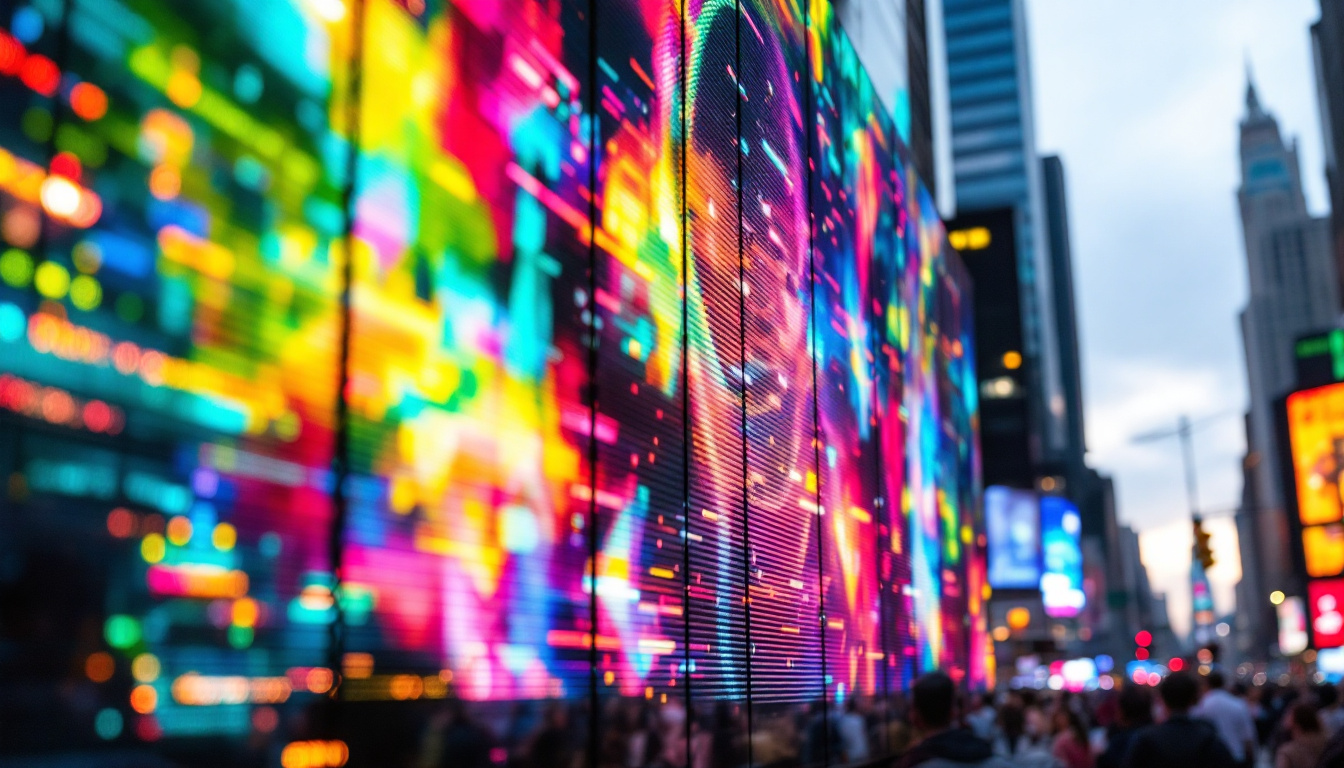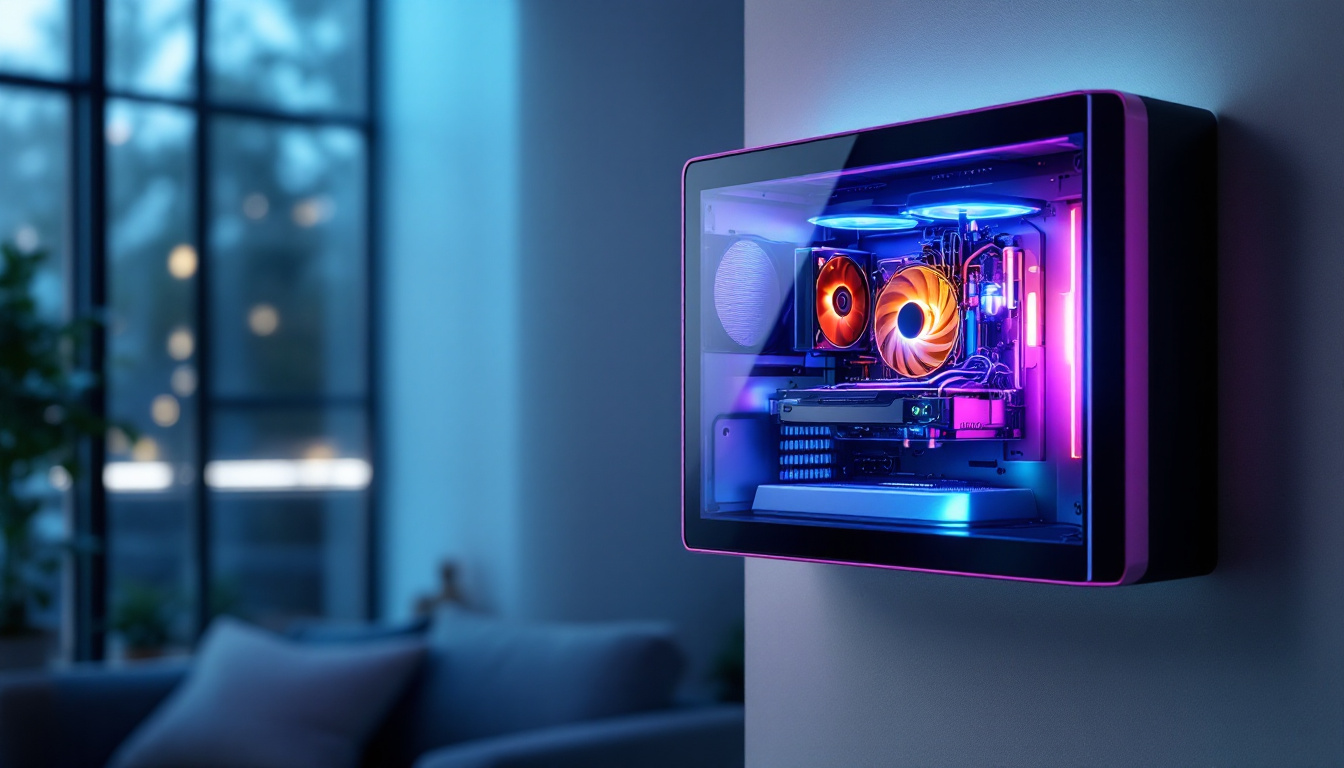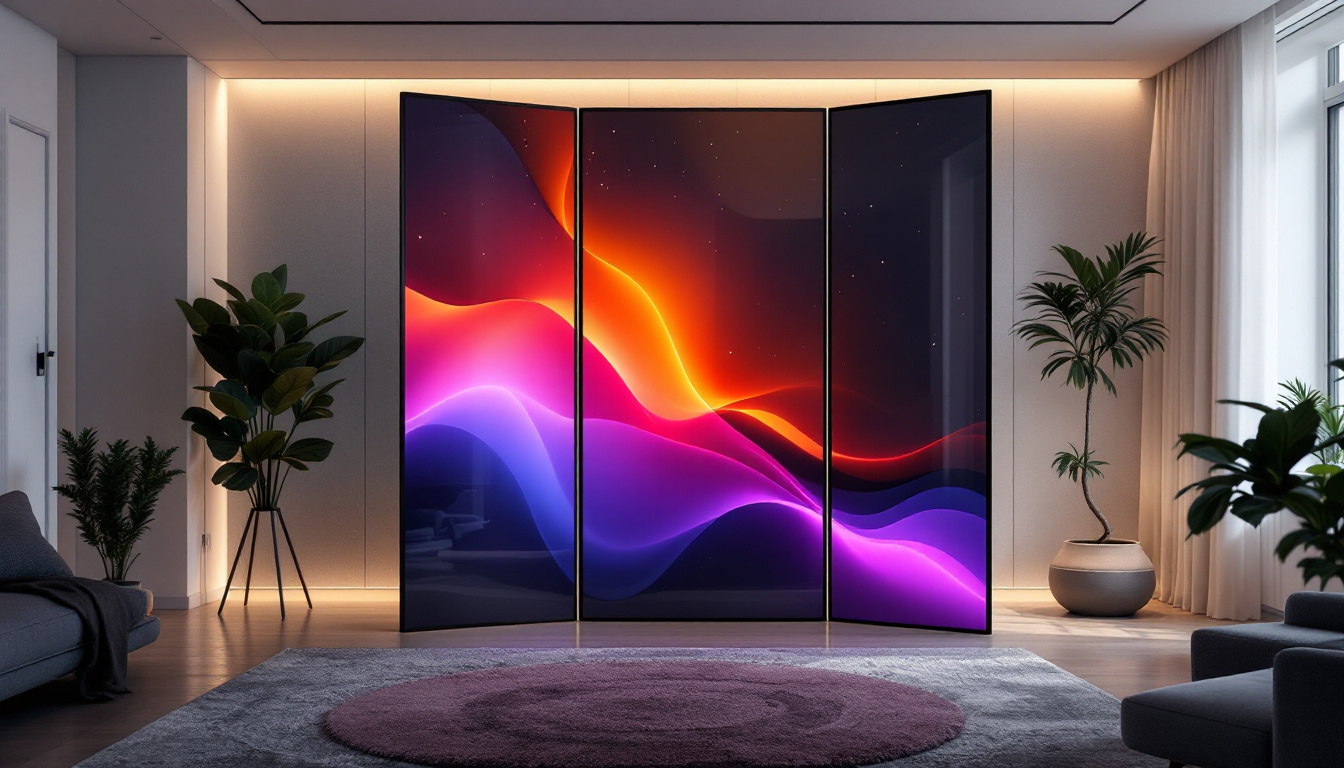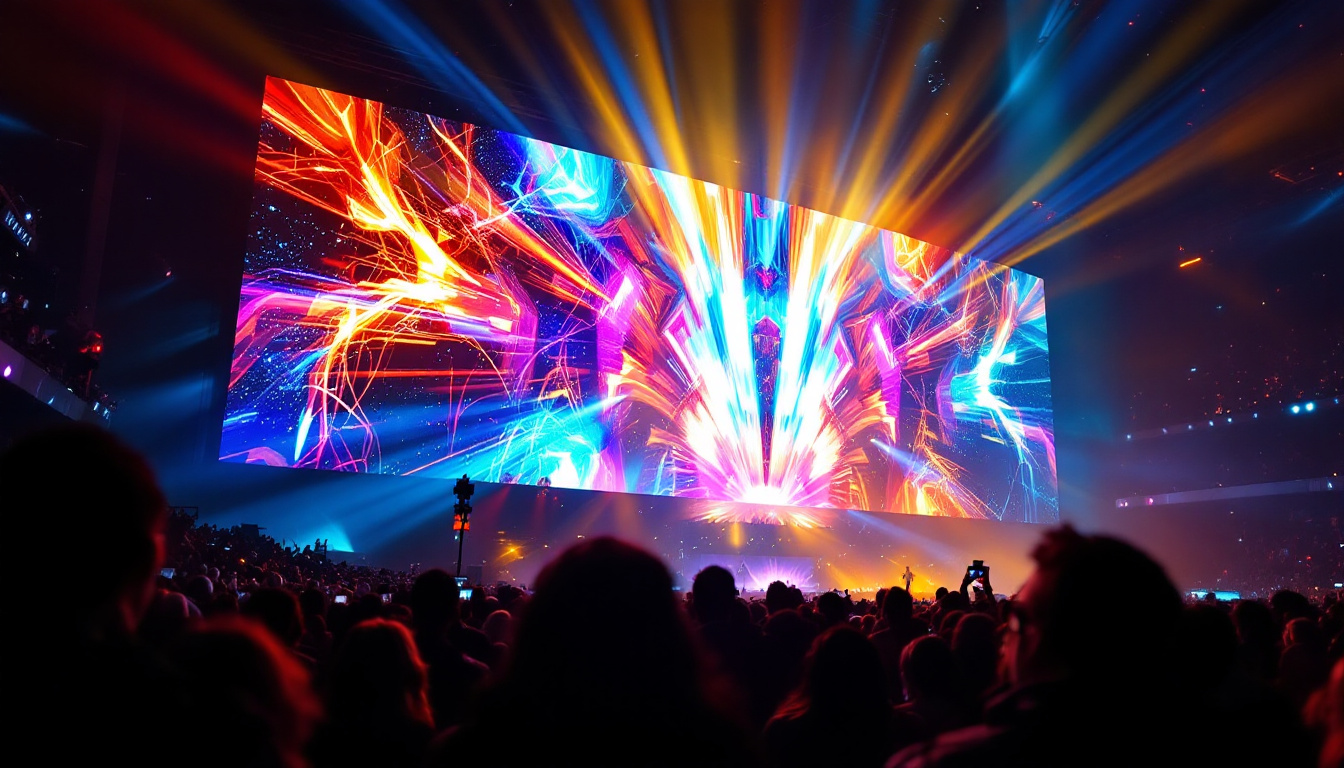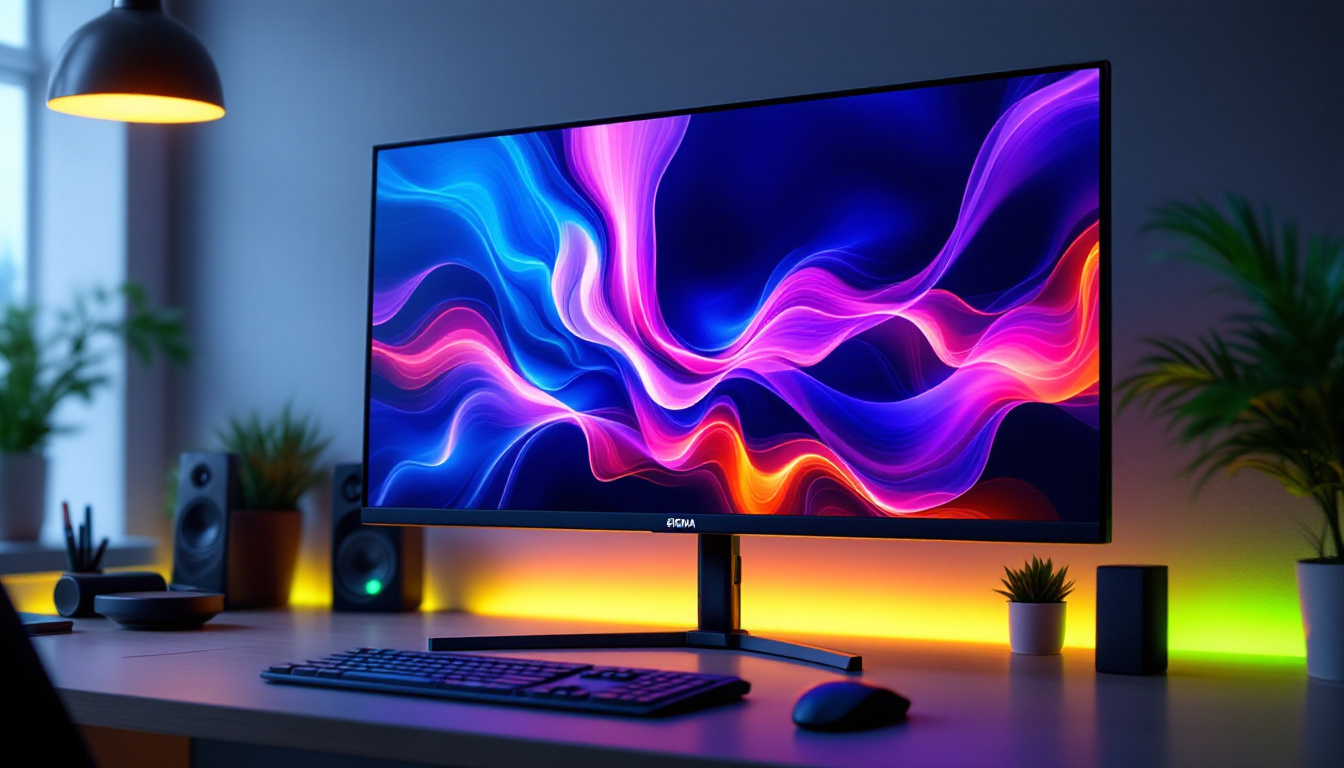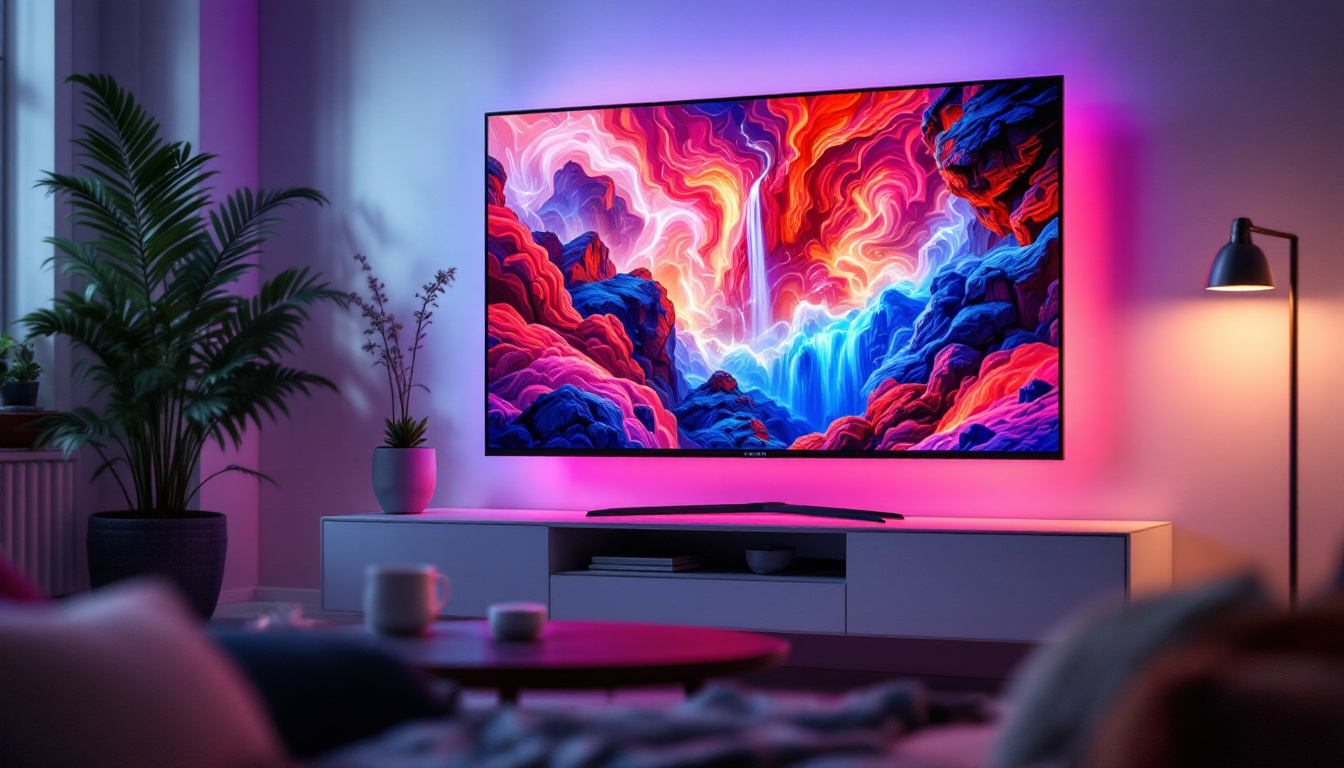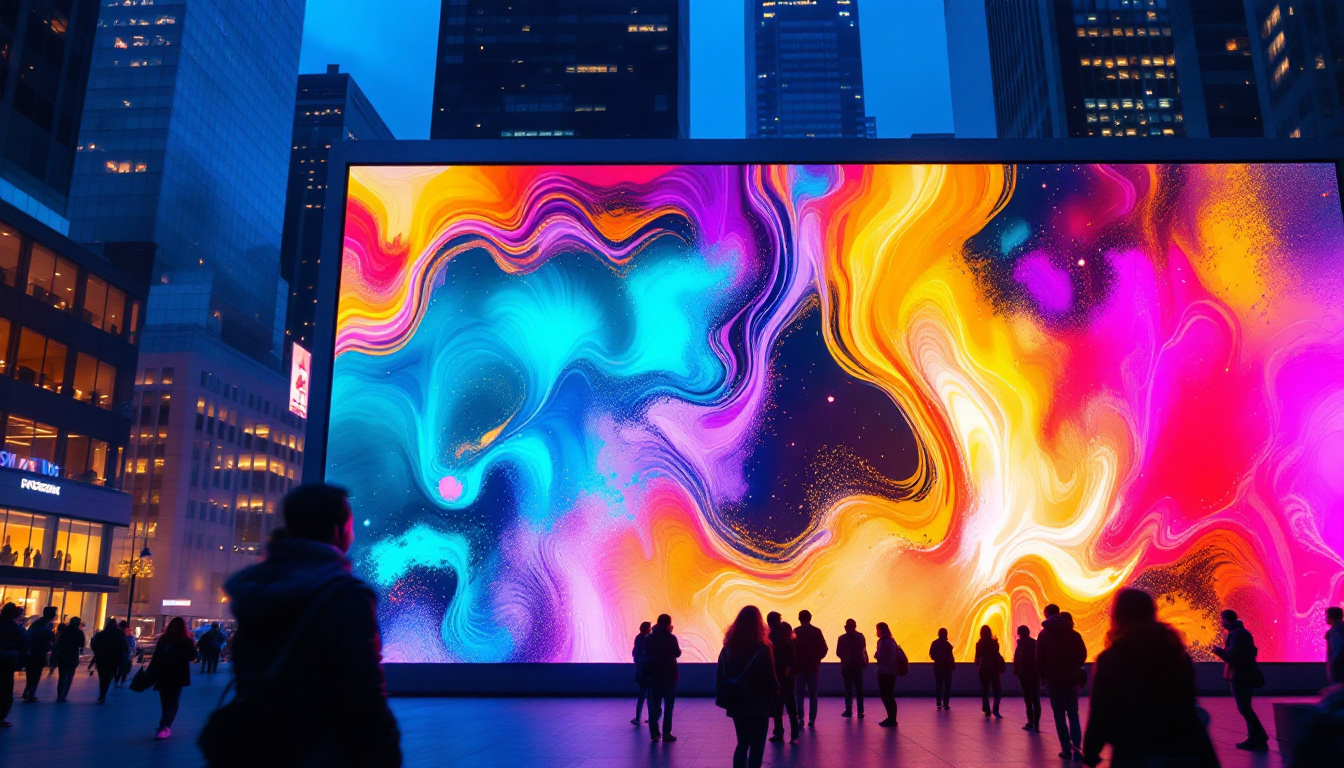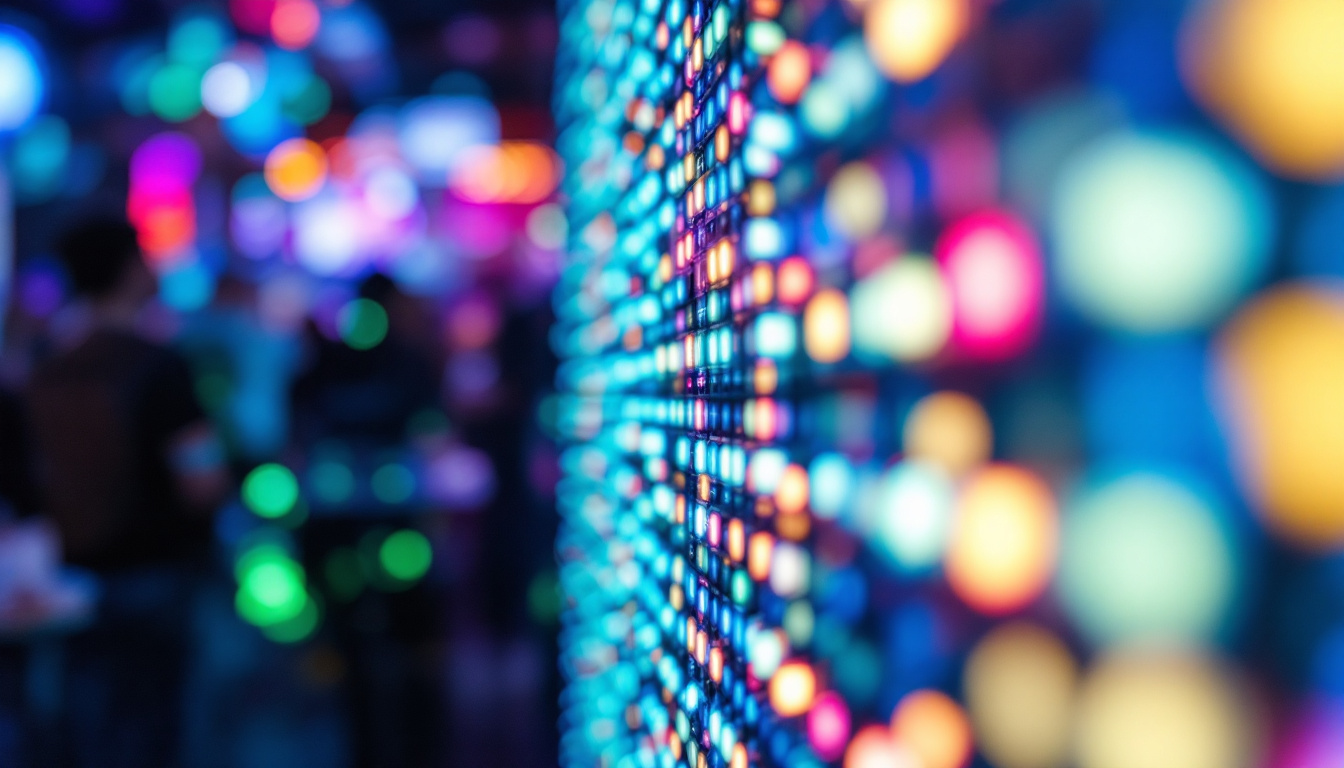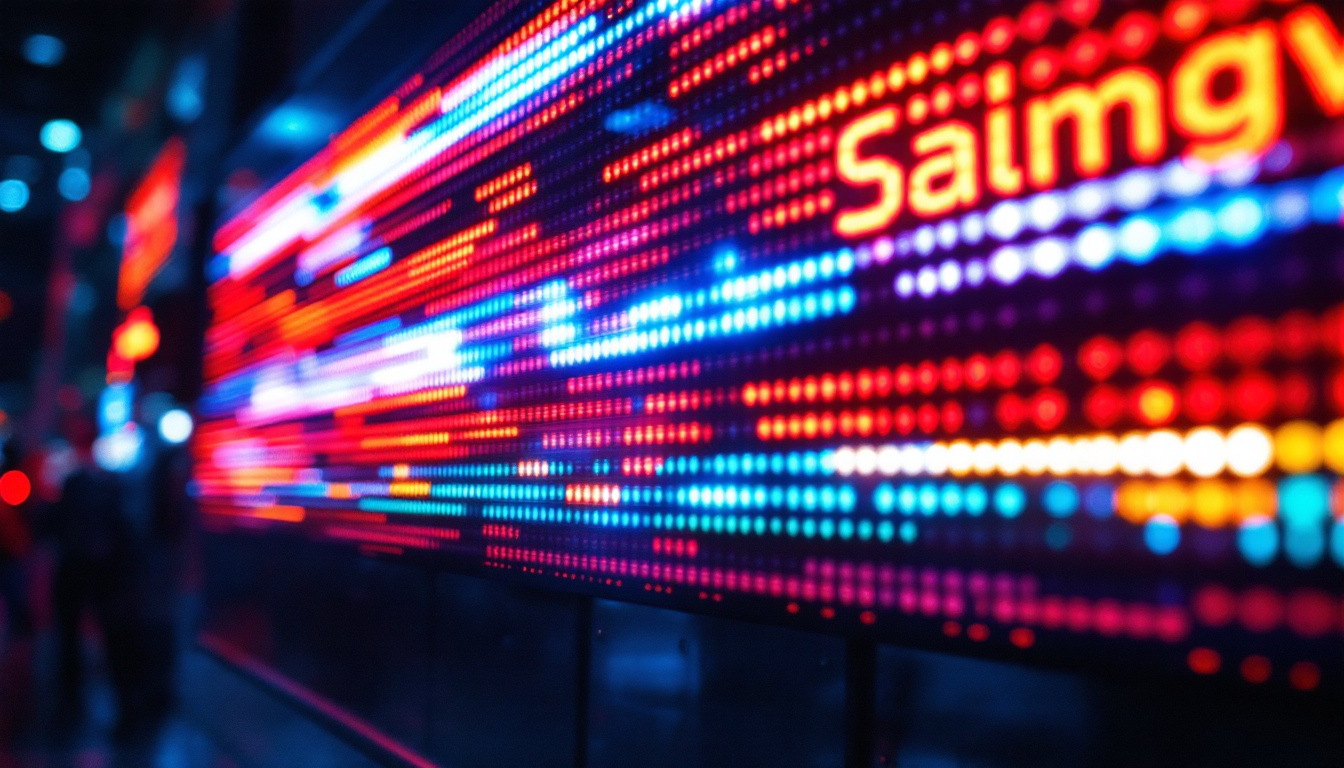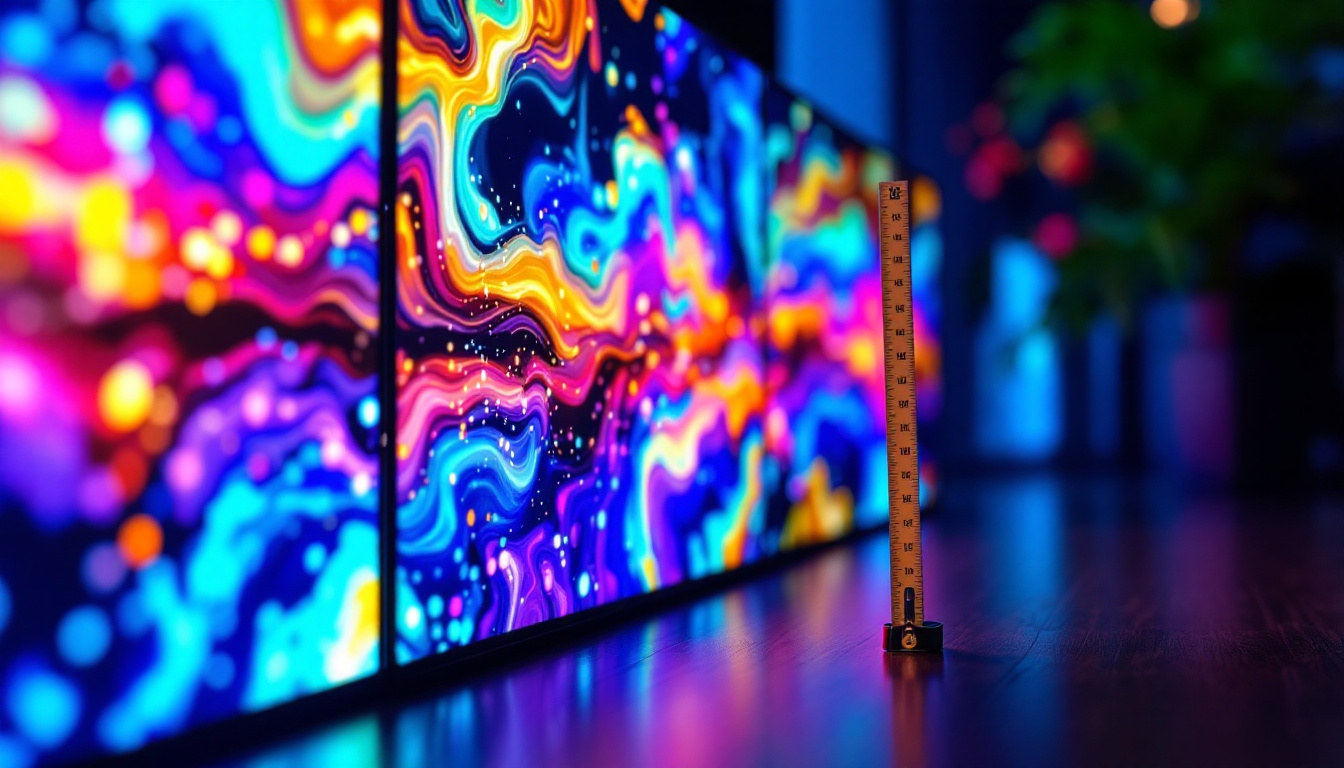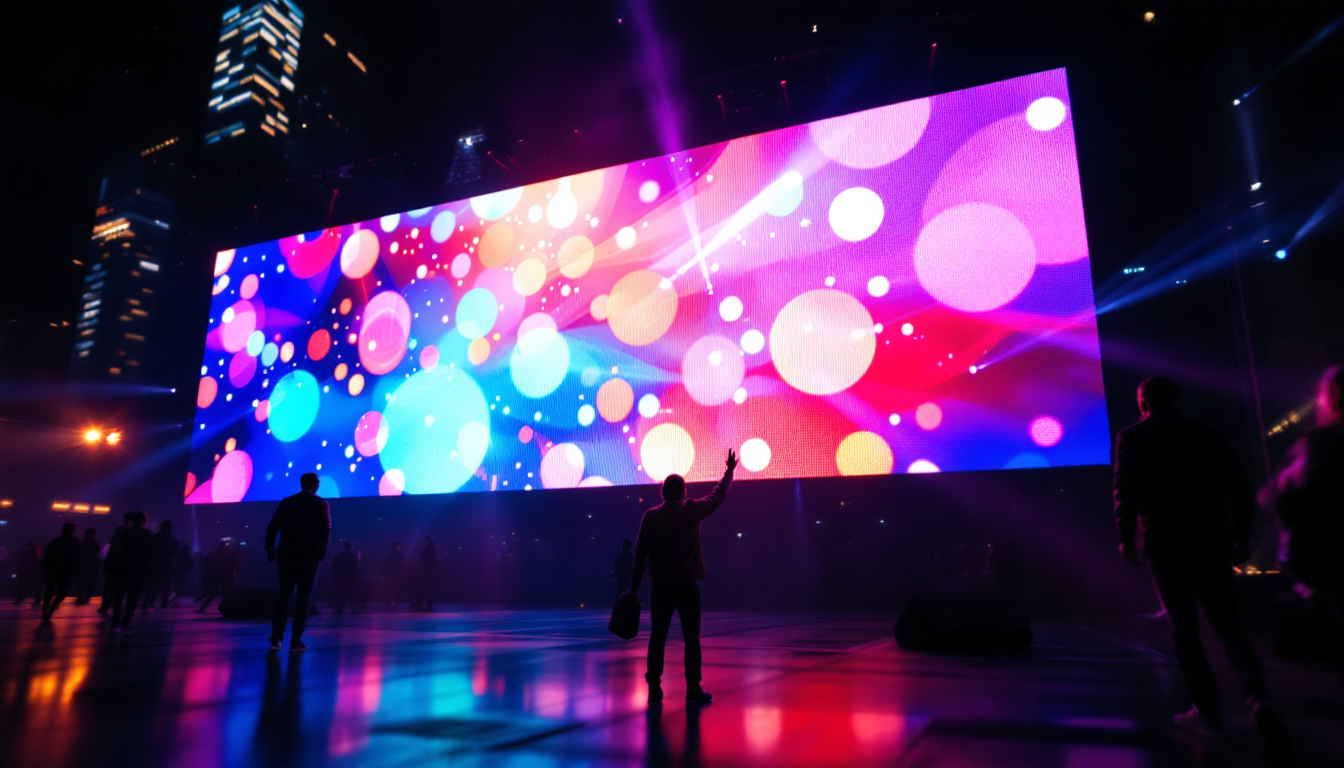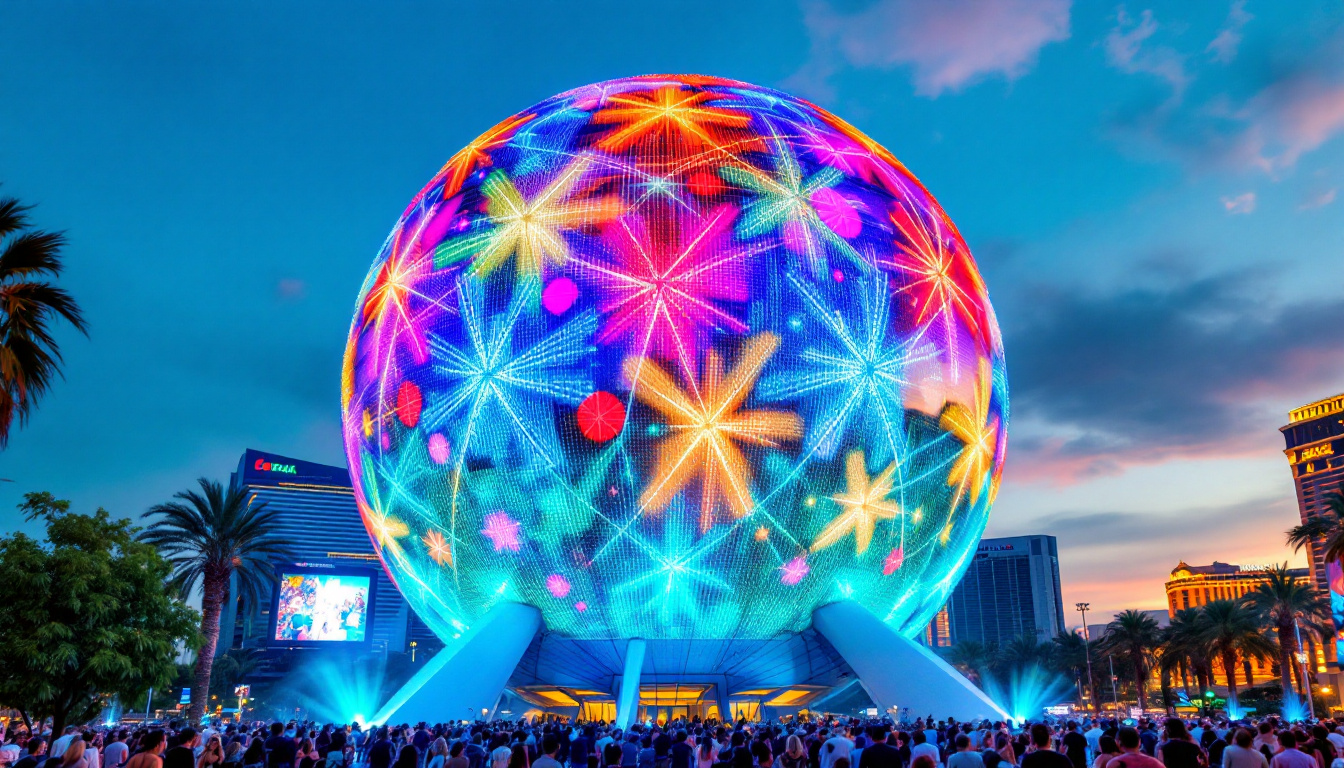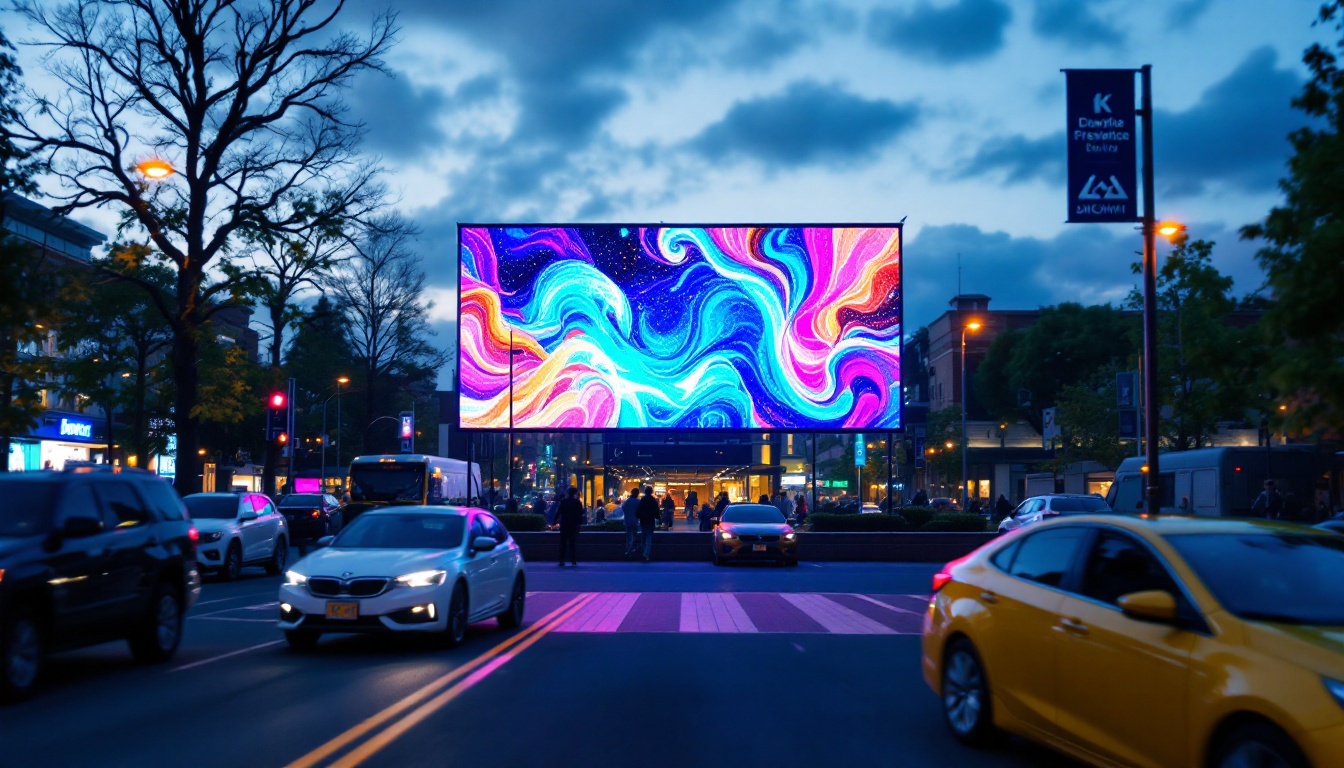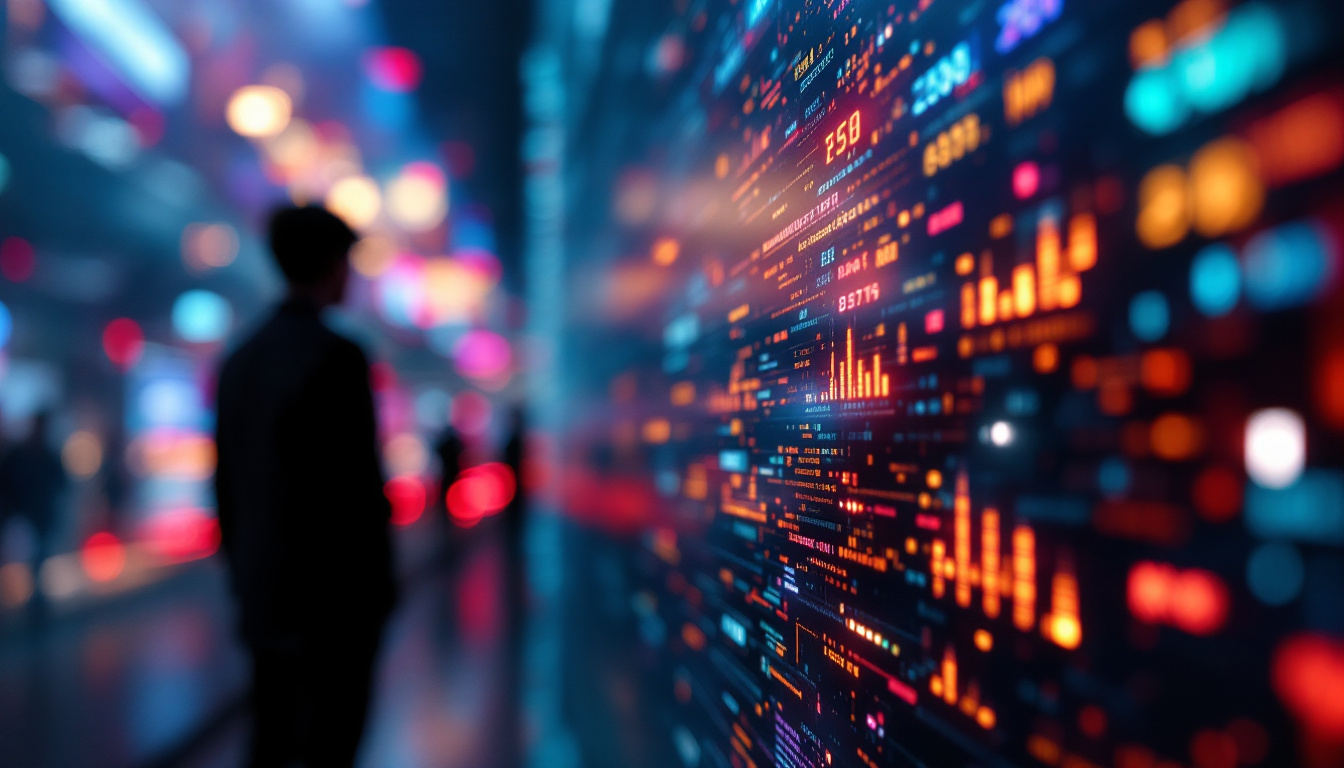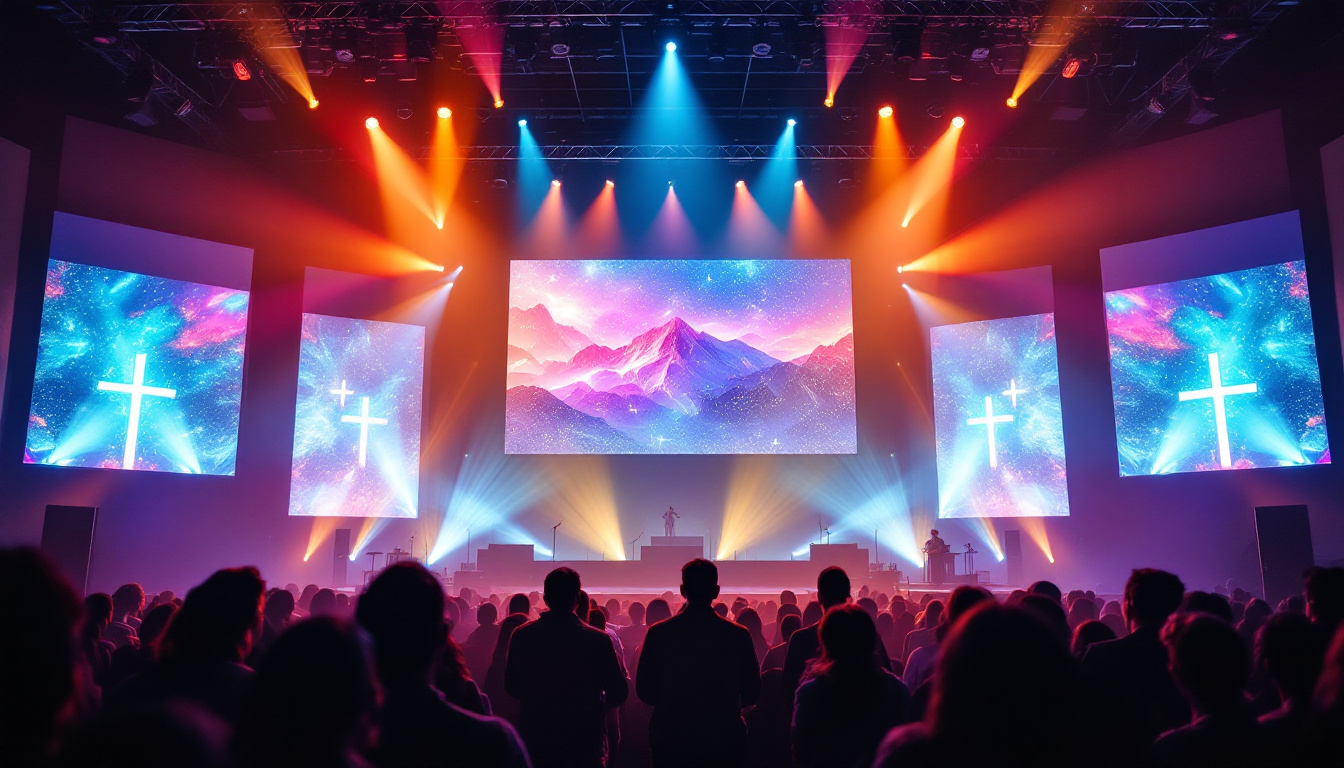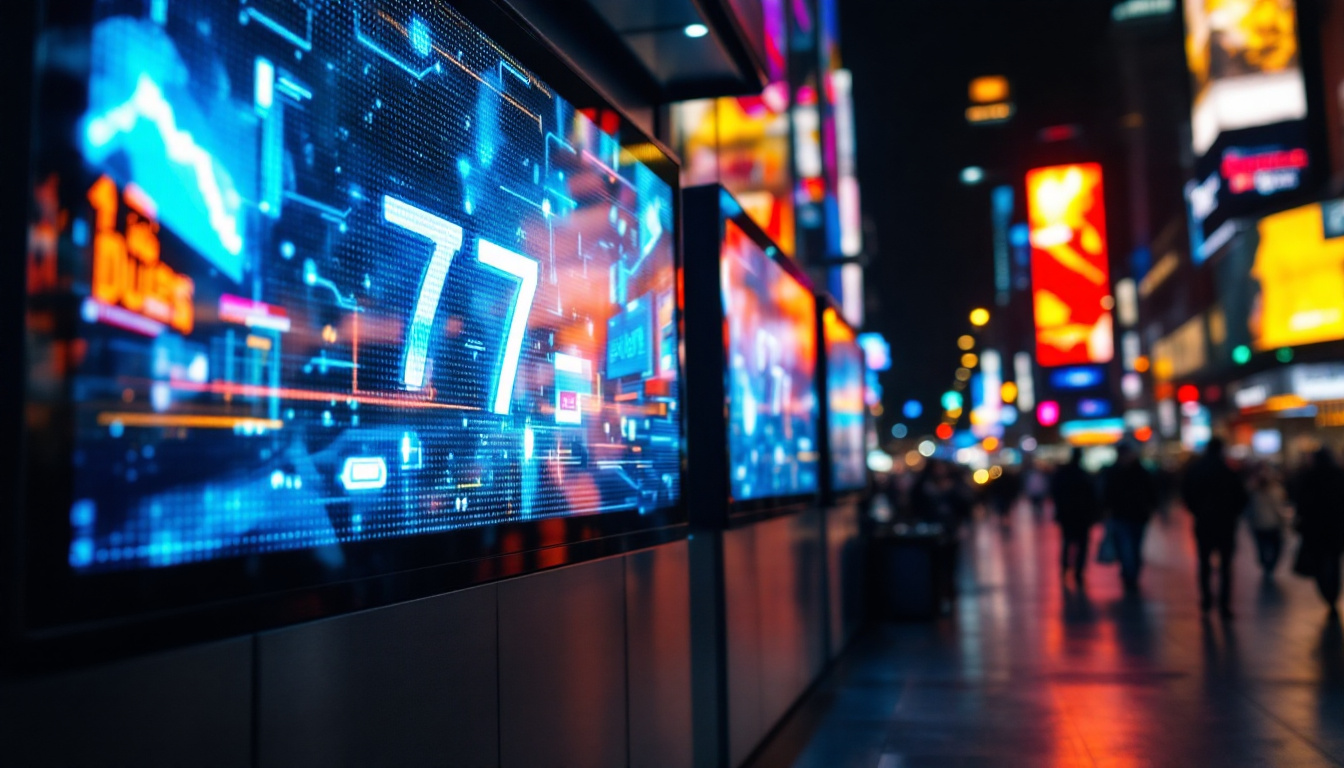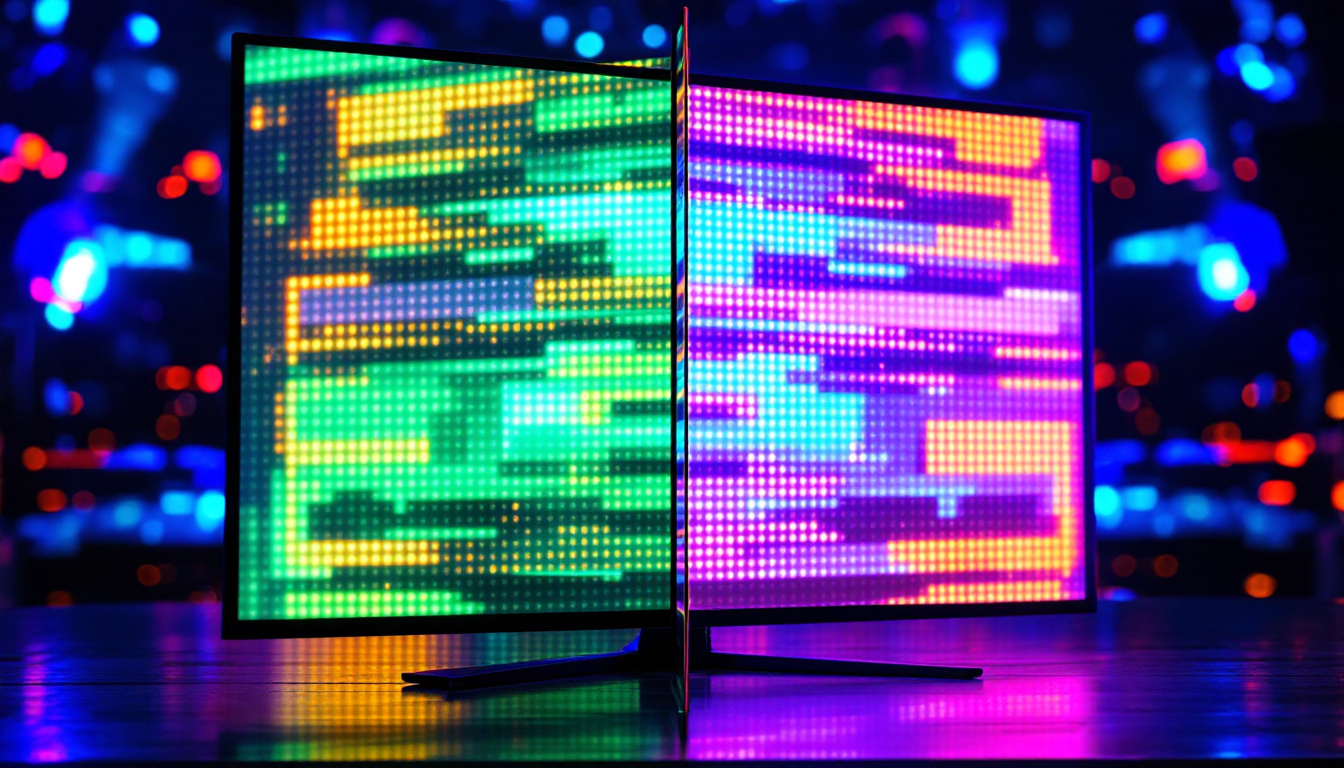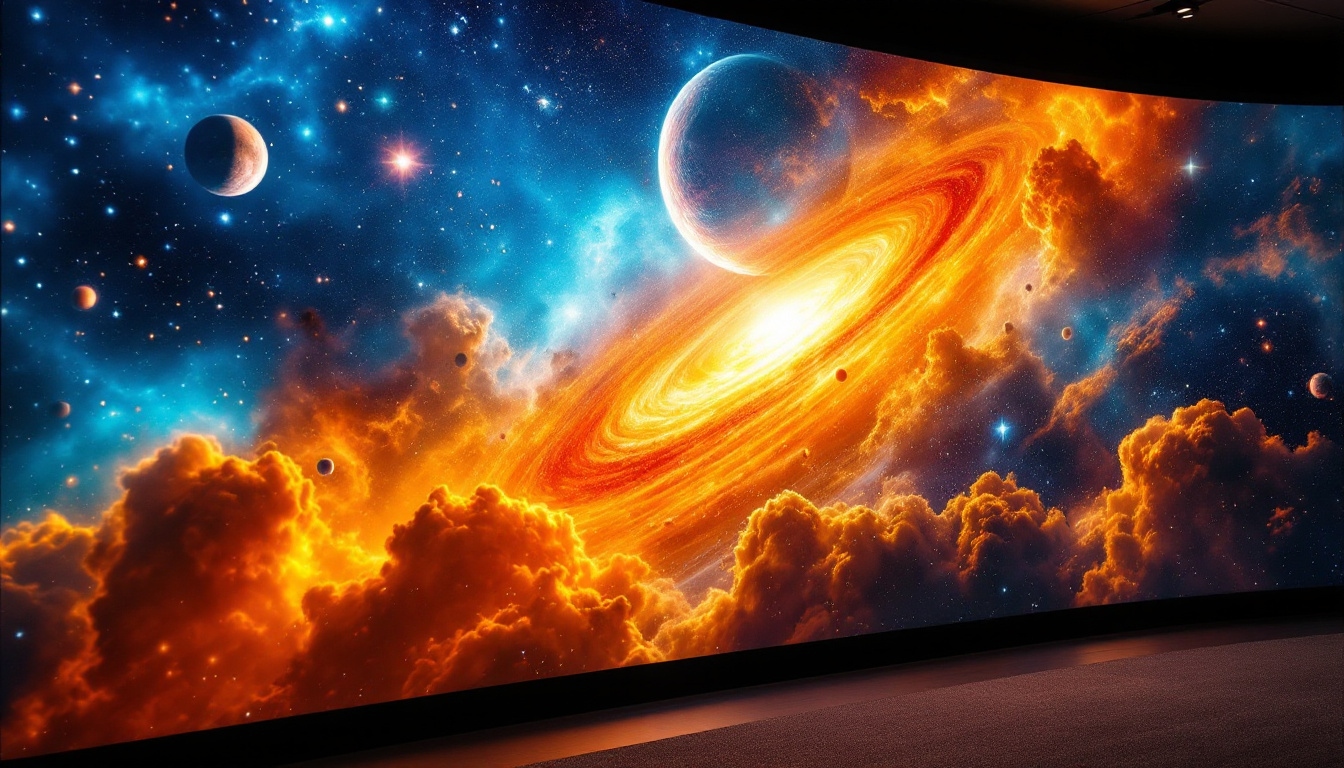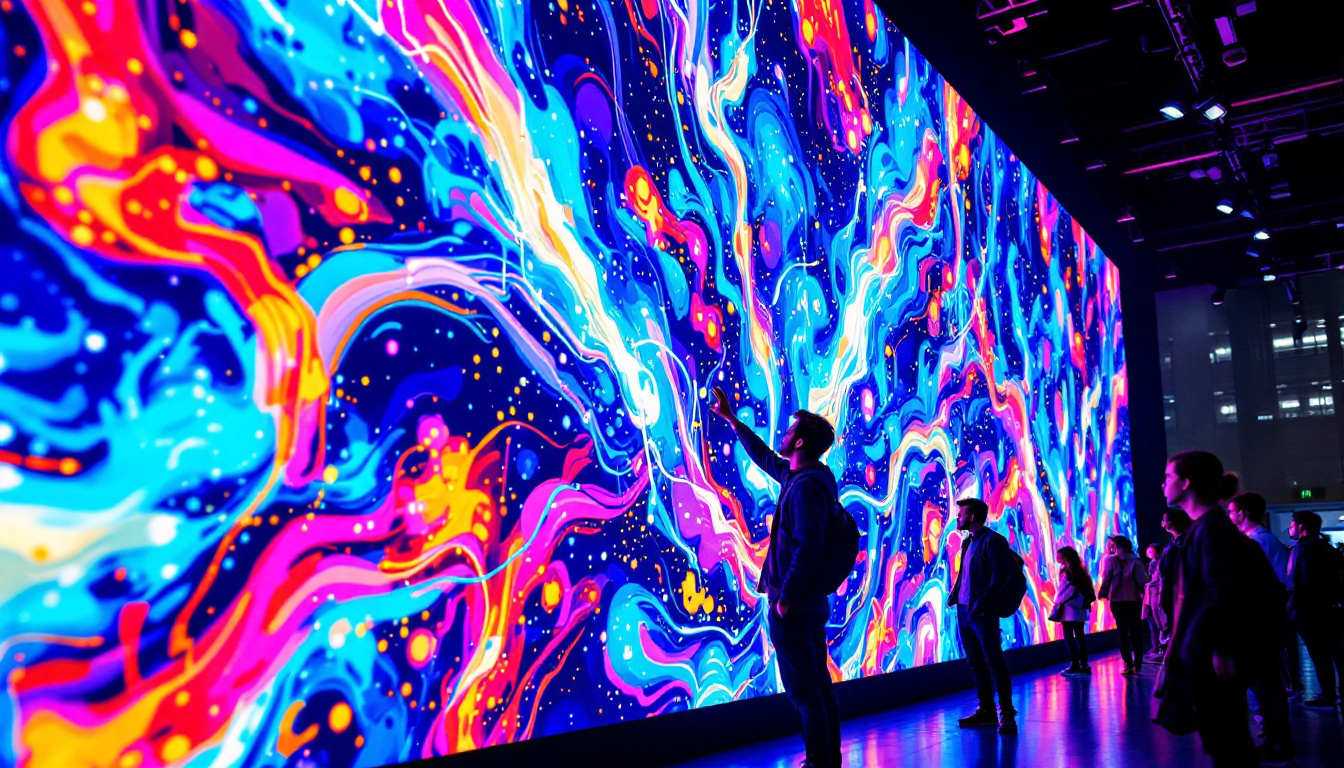In the realm of contemporary art, digital installations have emerged as a transformative medium, captivating audiences with their innovative use of technology. Among the various forms of digital art, LED displays stand out for their vibrant colors, dynamic visuals, and interactive capabilities. This article delves into the intricacies of LED displays within digital art installations, exploring their technology, artistic applications, and future potential.
Understanding LED Technology
LED, or Light Emitting Diode, technology has revolutionized the way light is produced and utilized in various applications, including art. Unlike traditional incandescent bulbs, LEDs are energy-efficient and have a longer lifespan, making them an ideal choice for large-scale installations. The compact size of LEDs also allows for innovative designs that were previously impossible, enabling artists to explore new dimensions in their work.
How LEDs Work
At the core of LED technology is the semiconductor material that emits light when an electric current passes through it. This process, known as electroluminescence, allows for the creation of vibrant colors and high brightness levels. The ability to control the intensity and color of each individual LED pixel enables artists to craft intricate and visually stunning displays. Furthermore, advances in technology have led to the development of RGB (Red, Green, Blue) LEDs, which can produce a wide spectrum of colors by mixing these three primary colors, thus enhancing the creative possibilities for artists.
Advantages of LED Displays in Art
One of the primary advantages of using LED displays in art installations is their versatility. Artists can manipulate light in real-time, creating immersive experiences that engage viewers on multiple sensory levels. Additionally, LED displays can be integrated into various environments, from galleries to public spaces, allowing for a broader reach and impact. The adaptability of LED technology means that artists can create dynamic installations that change over time, responding to audience interaction or environmental factors, which adds a layer of interactivity and engagement.
Moreover, the energy efficiency of LEDs aligns with the growing emphasis on sustainability in the art world. By utilizing less power, artists can create large installations without a significant environmental footprint, making LED displays a responsible choice. This sustainability factor not only appeals to eco-conscious creators but also resonates with audiences who are increasingly aware of environmental issues. The longevity of LED lights further reduces waste, as fewer replacements are needed over time, contributing to a more sustainable approach to art production.
In addition to their environmental benefits, LEDs also offer enhanced durability compared to traditional lighting options. They are less prone to breakage and can withstand various environmental conditions, making them suitable for both indoor and outdoor installations. This durability allows artists to experiment with larger and more ambitious projects, knowing that their lighting solutions can endure the elements. As a result, LED technology not only transforms the aesthetic landscape of art but also empowers artists to push the boundaries of their creativity.
The Role of LED Displays in Digital Art Installations
Digital art installations often aim to challenge traditional perceptions of art and engage audiences in new ways. LED displays serve as a powerful medium for achieving these goals, offering a canvas that can be continuously transformed and redefined.
Interactive Experiences
One of the most exciting aspects of LED displays is their potential for interactivity. Artists can incorporate sensors and software that respond to audience movements, sounds, or even emotions. This interactivity fosters a deeper connection between the viewer and the artwork, as participants become active contributors to the experience.
For example, an installation might change its visuals based on the number of people present or their proximity to the display. This creates a dynamic environment where the artwork evolves in real-time, making each visit unique.
Moreover, the use of augmented reality (AR) in conjunction with LED displays can further enhance these interactive experiences. By allowing viewers to use their smartphones or AR glasses, artists can layer additional digital elements onto the physical installation, creating an immersive experience that blurs the line between the real and the virtual. This fusion not only captivates the audience but also invites them to explore the narrative in a more personal and engaging manner, as they can interact with the artwork in ways that were previously unimaginable.
Storytelling Through Light
LED displays are not just about visual appeal; they can also convey complex narratives. Artists can use light and color to tell stories, evoke emotions, or highlight social issues. By layering images and animations, they can create a multi-dimensional experience that resonates with viewers on a personal level.
For instance, an LED installation might depict the journey of climate change through a series of animated visuals that shift in response to current environmental data. This not only informs the audience but also encourages them to reflect on their role in the narrative.
Additionally, the versatility of LED technology allows for the integration of soundscapes that complement the visual storytelling. By synchronizing audio elements with the changing visuals, artists can create an immersive atmosphere that envelops the audience, drawing them deeper into the narrative. This multi-sensory approach not only enhances the emotional impact of the installation but also encourages viewers to engage with the themes presented, prompting discussions and reflections long after they leave the space.
Case Studies of Notable LED Art Installations
Several artists and collectives have pushed the boundaries of LED technology in their installations, creating memorable experiences that challenge conventional art forms. Here are a few notable examples:
Refik Anadol’s “Infinity Room”
Refik Anadol is known for his innovative use of data and machine learning in art. His “Infinity Room” installation utilizes LED technology to create an immersive environment that blurs the lines between the physical and digital realms. Visitors step into a space filled with shifting patterns and colors, designed to evoke a sense of infinite possibilities.
The installation not only captivates with its visual spectacle but also invites contemplation on the relationship between technology and human perception. Anadol’s work exemplifies how LED displays can be used to create transformative experiences that resonate deeply with audiences.
TeamLab’s “Borderless” Exhibition
TeamLab, a collective of artists, programmers, and engineers, has gained international acclaim for its interactive digital art installations. Their “Borderless” exhibition in Tokyo features a vast array of LED displays that respond to visitors’ movements, creating a fluid and ever-changing environment.
As participants navigate the space, they become part of the artwork, influencing the visuals around them. This immersive experience highlights the potential of LED technology to foster community engagement and collaboration, as visitors share their experiences in real-time.
Design Considerations for LED Art Installations
Creating a successful LED art installation involves careful planning and consideration of various factors. Artists must think about the technical aspects, the intended audience, and the overall message they wish to convey.
Choosing the Right Display
When selecting an LED display for an installation, artists must consider factors such as resolution, brightness, and size. High-resolution displays are essential for detailed visuals, while brightness is crucial for installations in well-lit environments. Additionally, the size of the display should align with the intended viewing distance and audience engagement.
Artists may also choose between different types of LED technologies, such as OLED or microLED, each offering unique benefits and challenges. Understanding these options is vital for achieving the desired artistic effect.
Integration with Surroundings
The installation’s environment plays a significant role in shaping the viewer’s experience. Artists should consider how the LED display interacts with its surroundings, including lighting, architecture, and other elements. A well-integrated installation can enhance the overall impact and create a cohesive experience for the audience.
The Future of LED Displays in Digital Art
As technology continues to evolve, the future of LED displays in digital art installations appears promising. Innovations in hardware and software are opening new avenues for creativity and expression.
Advancements in Technology
Emerging technologies such as augmented reality (AR) and virtual reality (VR) are beginning to intersect with LED displays, creating hybrid experiences that push the boundaries of traditional art forms. Artists can now create multi-layered installations that blend physical and digital elements, offering audiences a more immersive experience.
Additionally, advancements in artificial intelligence are enabling artists to explore new creative possibilities. AI algorithms can analyze audience interactions and adapt the artwork in real-time, creating a truly personalized experience.
Expanding Accessibility
As LED technology becomes more affordable and accessible, a broader range of artists will be able to experiment with this medium. This democratization of technology is likely to lead to a surge in innovative installations that reflect diverse perspectives and experiences.
Moreover, as public spaces increasingly embrace digital art, LED displays will play a crucial role in transforming urban environments into dynamic, interactive galleries. This shift has the potential to engage wider audiences and foster a greater appreciation for contemporary art.
Conclusion
LED displays have become a cornerstone of digital art installations, offering artists a powerful medium to explore creativity, interactivity, and storytelling. As technology continues to advance, the possibilities for LED art installations are limitless. From immersive experiences that engage audiences to thought-provoking narratives that challenge perceptions, LED displays are redefining the boundaries of contemporary art.
The future holds exciting prospects for artists willing to embrace this medium, as they continue to captivate and inspire audiences around the world. As the art community navigates this evolving landscape, the intersection of technology and creativity will undoubtedly yield remarkable innovations, enriching the cultural fabric of society.
Discover the Future of Visual Art with LumenMatrix
As you stand at the frontier of digital artistry, let LumenMatrix be your guide to the next dimension of visual expression. Our extensive range of LED display solutions, from the immersive Indoor LED Wall Display to the innovative LED Transparent Display, is designed to bring your creative vision to life. Whether you’re enhancing public spaces or crafting interactive installations, LumenMatrix equips you with the technology to create unforgettable experiences. Check out LumenMatrix LED Display Solutions and join the revolution in visual communication, where your message resonates with brilliance and precision.

